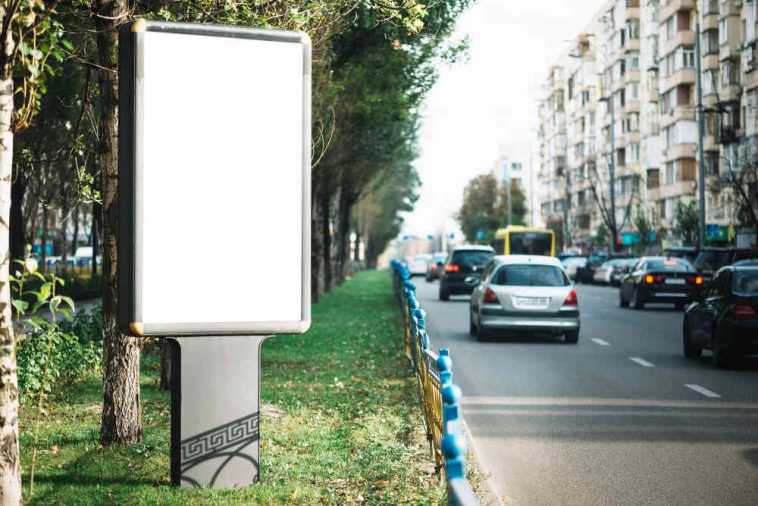As a business owner or manager, you understand signage’s critical role in attracting customers and building brand awareness. However, even the most eye-catching sign can fall short if not installed properly. Ensuring your signage is securely and professionally mounted is just as important as its design. This article will guide you through industry best practices for sign installation success. From site preparation to choosing sign installation companies near me, you’ll learn key steps to maximize the impact and longevity of your signage investment. Follow these expert tips to avoid common pitfalls and achieve flawless sign installation results.
Preparing for a Smooth Sign Installation
Site Assessment and Planning
Before installing any sign, conduct a thorough site assessment. This crucial step involves evaluating the location’s visibility, traffic patterns, and potential obstacles. Consider factors like sunlight exposure, nearby structures, and vegetation that might affect the sign’s visibility. Measure the available space accurately to ensure the sign fits perfectly and complies with local regulations.
Gathering Necessary Tools and Materials
Compile a comprehensive list of tools and materials needed for the installation. This may include drills, levels, measuring tapes, and appropriate fasteners. Don’t forget safety equipment such as hard hats, gloves, and safety glasses. Having everything on hand before starting will prevent delays and ensure a smooth workflow.
Obtaining Permits and Approvals
Research and obtain all required permits and approvals before installation day. This process may involve submitting design plans, structural calculations, and electrical specifications to local authorities. Familiarize yourself with zoning laws, building codes, and homeowners’ association rules that might affect your sign installation. Compliance with these regulations will prevent costly fines and potential sign removal later.
Choosing the Right Location for Maximum Visibility
Assess Traffic Patterns
When selecting a location for sign installation, carefully analyze traffic patterns in the area. Consider both vehicular and pedestrian traffic flow to ensure your sign captures the attention of your target audience. High-traffic intersections or busy sidewalks often provide excellent visibility, but local regulations may restrict sign placement in certain areas.
Consider Viewing Distance and Angles
The distance from which your sign will be viewed is crucial to its effectiveness. For signs intended to be read by passing motorists, position them far enough away to allow for adequate reading time. Consider various viewing angles to ensure your sign remains legible from different approaches. Avoid placing signs where obstructions like trees, buildings, or other signage might block visibility.
Leverage Natural and Artificial Lighting
Proper lighting can significantly enhance your sign’s visibility and impact. Position your sign to avoid harsh shadows or glare during daytime hours to take advantage of natural light sources. For nighttime visibility, consider incorporating illumination options such as backlighting or spotlights. Always ensure your lighting choices comply with local ordinances and don’t create distractions for drivers or nearby residents.
Selecting the Proper Signage Material for Durability
When it comes to sign installation, choosing the right material is crucial for longevity and effectiveness. Different environments and purposes require specific materials that can withstand various conditions while maintaining appearance and functionality.
Weather-Resistant Options
For outdoor signage, weather resistance is paramount. Materials like aluminum and dibond offer excellent durability against rain, sun, and temperature fluctuations. These metals resist corrosion and maintain their integrity even in harsh climates. Alternatively, high-density urethane (HDU) provides a lightweight yet robust option that can be carved and painted to resemble wood without the susceptibility to rot or warping.
Indoor Signage Solutions
Interior signs have different requirements. Acrylic and PVC are popular choices due to their versatility and cost-effectiveness. These materials can be easily customized and resist everyday wear and tear. For a more upscale look, glass or brushed metal signage can add a touch of elegance to corporate environments.
Specialty Materials for Unique Needs
Some situations demand specialized materials. For example, photoluminescent signs are essential for emergency exits, as they glow in the dark without requiring electricity. Flame-resistant materials like certain plastics or treated fabrics may be necessary in areas with strict fire codes.
By carefully considering the environment and purpose of your sign, you can select a material that ensures durability, maintains aesthetics, and provides the best value for your investment.
Hiring a Professional Sign Installation Company
When it comes to sign installation, enlisting the expertise of a professional company can make all the difference. These specialists bring a wealth of knowledge and experience to ensure your signage is visually appealing and safely and securely installed.
Benefits of Professional Installation
Professional sign installers possess the necessary tools, equipment, and skills to handle various signs and installation scenarios. They understand local building codes and permit requirements, saving time and potential legal headaches. Moreover, their expertise can help extend the lifespan of your sign by ensuring proper installation techniques are used.
Choosing the Right Company
When selecting a sign installation company, consider the following factors:
- Experience and reputation in the industry
- Portfolio of past projects
- Insurance coverage and certifications
- Customer reviews and testimonials
The Installation Process
A reputable sign company will guide you through the entire process, from the initial site survey to the final installation. They’ll assess location, visibility, and structural requirements to determine the best installation method. This comprehensive approach ensures your sign is installed correctly the first time, minimizing future maintenance issues and maximizing its impact.
By investing in professional sign installation, you’re not just paying for a service—you’re investing in your business’s long-term success and visibility.
Ensuring Proper Care and Maintenance Post-Installation
Once your sign is installed, it’s crucial to implement a robust care and maintenance routine to preserve its appearance and functionality. Regular upkeep extends the life of your signage and ensures it continues to make a strong impression on your audience.
Cleaning and Inspection
Establish a regular cleaning schedule based on your sign’s location and exposure to the elements. Use gentle, non-abrasive cleaners appropriate for your sign’s material. During cleaning, inspect for any damage, loose parts, or signs of wear. Address minor issues promptly to prevent more significant problems down the line.
Lighting Maintenance
For illuminated signs, check bulbs and electrical components regularly. Replace burnt-out bulbs immediately to maintain consistent brightness. LED signs may require less frequent maintenance but still benefit from periodic power supply and connection checks.
Weatherproofing and Protection
Apply weatherproof coatings or sealants as the manufacturer recommends to protect against moisture, UV rays, and temperature fluctuations. Consider installing protective covers or awnings in areas prone to extreme weather to shield your sign from the harshest conditions.
Professional Servicing
Schedule annual professional inspections to catch any issues that may not be visible to the untrained eye. Experts can perform more in-depth maintenance, such as re-tensioning internal components or updating electrical systems, ensuring your sign remains in top condition for years.
Final Thoughts
As you embark on your sign installation project, remember that attention to detail and proper planning are key to success. Following industry best design practices and using materials, permitting, and installation techniques will ensure your signage achieves maximum impact and longevity. Take the time to consider placement, visibility, and local regulations carefully. Partner with experienced professionals when needed, and don’t overlook safety precautions during installation. With the right approach, your new signage will effectively communicate your message and enhance your property or business for years. Implement these best practices, and you’ll be well on your way to sign installation success. The first step is to search “sign installation companies near me.”





GIPHY App Key not set. Please check settings